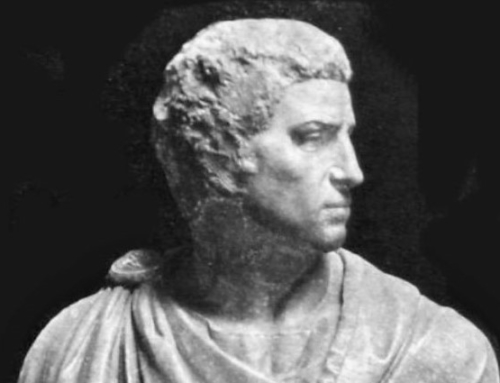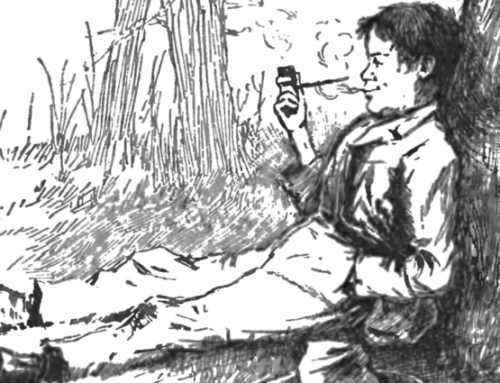 One of the greatest adventure stories in exploration history was a dismal failure. The ill-fated voyage of the ship Endurance never reached its destination. However, the story of its heroic captain, Sir Ernest Shackleton, survives as a stirring inspiration for all time.
One of the greatest adventure stories in exploration history was a dismal failure. The ill-fated voyage of the ship Endurance never reached its destination. However, the story of its heroic captain, Sir Ernest Shackleton, survives as a stirring inspiration for all time.
The 1914 expedition sought to be the first to cross Antarctica. It failed when the Endurance became trapped in the ice for ten months before being crushed by it. The ship sank, and the crew drifted on ice floes for another five months before escaping in tiny boats to nearby Elephant Island. Sir Ernest and five of his crew later reached the island of South Georgia after a 16-day, 800-mile journey in an open lifeboat in treacherous seas. He returned to rescue the remaining 21 crewmen after three unsuccessful attempts.
The daring adventure returned to the headlines recently when a South Africa-based icebreaker found the wreckage of the Endurance 10,000 feet below the surface in Antarctica’s Weddell Sea. The March 5th discovery thrilled the world with footage of the wooden ship in an amazing state of preservation, 106-plus years after the sinking.
The technical details of the finding are fascinating. However, the discovery has a symbolic message for a world mired in mediocrity. The quest to find the Endurance contains a lesson that can serve to reawaken sentiments of heroism so needed in these times.
A Turning Away From Heroism
The ship lived up to its name: It symbolized incredible endurance. Its story showed how a small band of men defied the elements and reached the extreme limits of human effort in the face of adversity. This is the stuff of legends that used to inspire people to sacrifice, to heroism and virtue. Figures like Sir Ernest Shackleton were deemed worthy of imitation.
However, postmodern times gradually destroy the appetite for heroic endeavors full of danger. The present materialistic culture glorifies comfort, safety, and health. People turn inward to focus on daily life’s trivial, mediocre things. Instead of grand horizons, people indulge in pleasures and vices with all the passion of their beings. For this reason, society is in such a state of crisis.
Few exercise the option of sublime and daring endeavors, which are consigned to the risky bygone adventures of saints, heroes, and poets that all “sensible” people avoid. Indeed, the virtues and qualities of Sir Ernest and his crew are as if buried 10,000-feet-deep in the ocean. No one wants to endure the suffering, sacrifice, and dangers to break out of the watery tomb.
And so, these things would remain hidden if left to the natural course of a decadent society.
A Yearning That Cannot Be Suppressed
However, the symbolic lesson of the finding of the Endurance proves the contrary. Human nature can never be satisfied with a mediocre existence and life without purpose or challenge. The pursuit of sublime and heroic undertakings cannot be suppressed. It must find ways to express itself. Souls come alive when in contact with them.
There is a yearning of the postmodern soul that searches in the depths of society for those hidden, lost treasures that give meaning and purpose to life. The epic search and finding of the Endurance thrilled the world and served as a sign that these things exist and can still inspire souls to great feats.
Deep inside souls, heroism, sacrifice ,and virtue wait like the Endurance in an excellent state of preservation for those with the courage to search for them.
Mugged by Reality
The case of the Endurance is only one of many appeals to break out of mediocrity. Mugged by the terrible reality of the postmodern wasteland, many now sense the social and psychological emptiness of the present course and are searching for alternatives.
Surprisingly, they express a desire, yearning, and admiration for once-rejected traditions, forgotten narratives, and sublime art. From Gregorian chant to specialty beers to Gothic architecture, they manifest an astonishing openness for the marvelous fruits of Christian civilization. Some make incredible sacrifices to return to tradition and reject modern abominations. Others find the One True God after a long trek amid tribulation.
These are the seeds that inspire great exploits. They convince people to abandon their self-love and to sacrifice themselves for others. They open the horizons with an invitation to be the heroes and saints that are so needed today. The world needs new Shackletons to inspire a return to order. The symbolic finding of the Endurance, despite all odds, proves that this new world is possible.
An Endurance waits in the hearts of all who dare to look beyond self and resurrect those virtues long abandoned. It is the reward of all who embrace that ever-ancient, ever-new God Who has always inspired the great epics of history.
The Imaginative Conservative applies the principle of appreciation to the discussion of culture and politics—we approach dialogue with magnanimity rather than with mere civility. Will you help us remain a refreshing oasis in the increasingly contentious arena of modern discourse? Please consider donating now.
The featured image is “Endurance under sail trying to break through pack ice, Weddell Sea, Antarctica, 1915, by Frank Hurley, from original Paget Plate, 1914-1915 State Library New South Wale.” Courtesy of the Mitchell Library, State Library of New South Wales. This file is in the public domain courtesy of Wikimedia Commons.







I’ve been an admirer of the Endurance story. There are several books available on it, including Shackleton’s own, South. Each has its own assets.
I’m not comfortable with Dr Horvat’s apparent equating of endurance with heroism. His comment, “The quest to find the Endurance contains a lesson that can serve to reawaken sentiments of heroism so needed in these times.”
Very often ‘reawakening heroism in these times’ refers to the heroics of warfare, which of course the world is now experiencing. This in turn is turning to the actions of men, who have already demonstrated their inability to solve the often man-made problems of men.
One of the best examples of heroism not involving a military solution to any problem is found in the Bible, at Isa 53. This is the moving account of the “suffering servant”, who is no less than the Messiah, Jesus. Notice the reason for his heroic sacrifice, ‘even unto death’, at v. 10: “through him Yahweh’s good pleasure will be done.” What good pleasure? The restoration of life to mankind, currently under the pain of death for sin. (Ro 6:23)
The only solution for today’s problems is the establishment on earth of God’s kingdom, not Biden’s or Putin’s or any man’s. Which is exactly what we’re told to pray for – Mt 6:9,10.
I recommend readers try to locate either the book or the dvd called SHACKETON’S CAPTAIN about the details of this trip. How could this crew survive? We are wired by God for amazing lives, not mediocrity.
Two aspects of this story are commonly overlooked or unknown to modern readers, but which I found illuminating or inspiring. The first is that when Shackleton was recruiting men for his expedition, he didn’t just question them about their experience as sailors or in arctic conditions, but also about the other skills and interests they had. He sought out men with a variety of abilities and hobbies, many of which had nothing to do with Antarctic exploration, such as writing, music, or art. They taught these things to each other while they were trapped in the ice, fighting off boredom and despair.
A second aspect of their tale was that they returned home to a land mired in the Great War. Their heroic exploits weren’t front page news when thousands of soldiers were dying a few hundred miles away. Most of Shackleton’s men ended up joining the military and several of them lost their lives or their health in the course of the conflict. While they were recognized as heroes by some, widespread recognition of their ordeal came gradually. There were no ticker-tape parades for that crew.
What can we take from these two facts? We each can draw our own conclusions, but that first anecdote reminded me that not everything I think is important in life will turn out to be, and sometimes our most seemingly trivial choices and abilities will turn out to be significant.
The second snippet of Shackleton’s history seemed to suggest that today’s headlines don’t always accurately convey what history will eventually deem was important. It’s a mistake to care about popular fame, because you don’t really know what the next chapter of the story might reveal.